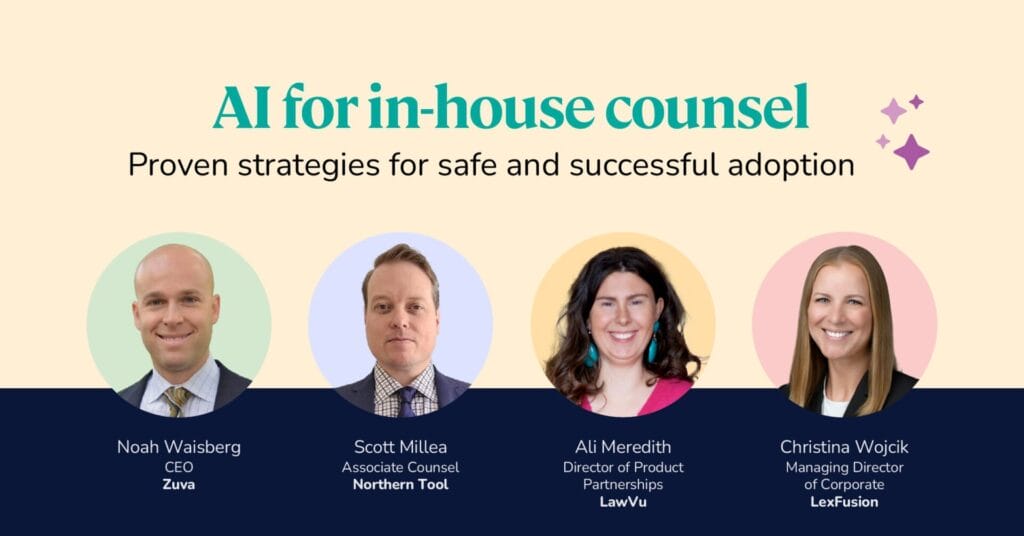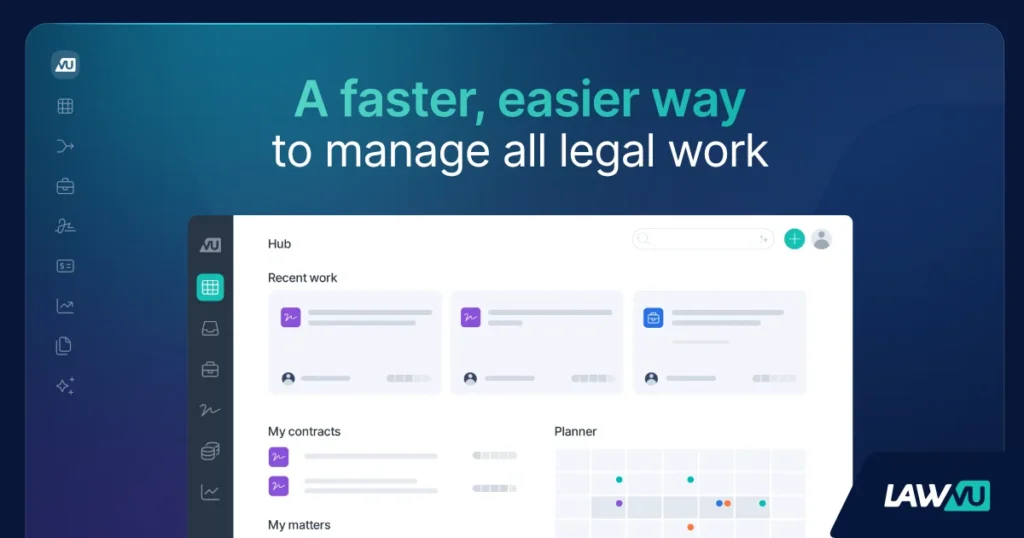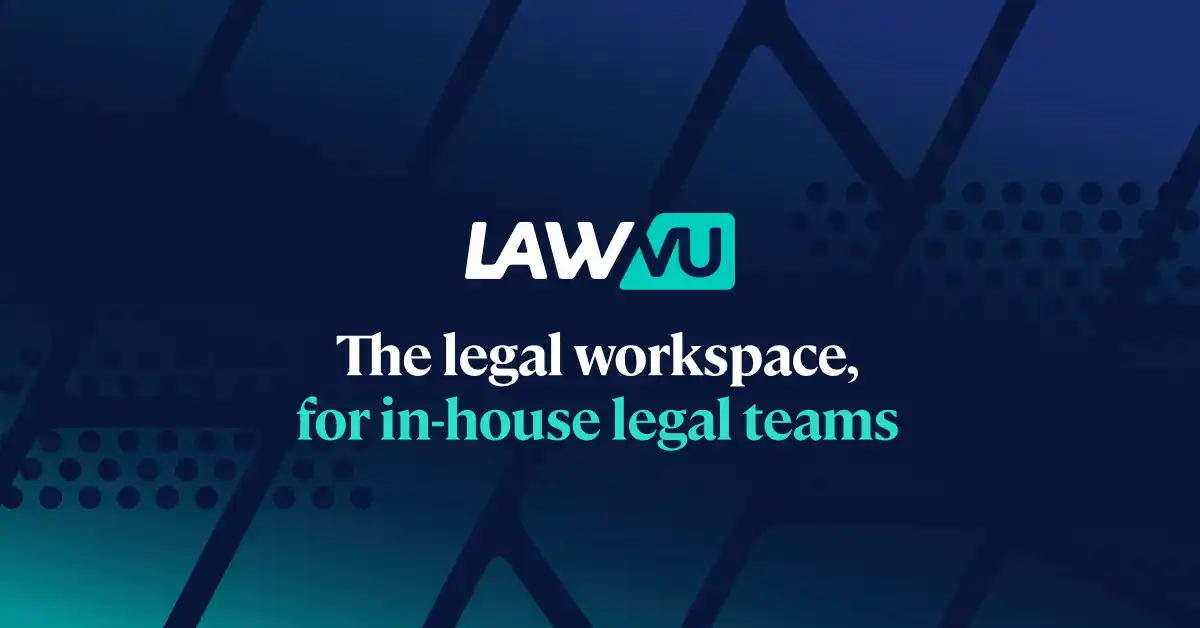AI for in-house counsel: Proven strategies for safe and successful adoption

As they learn to adapt to rapidly advancing technologies which promise to reshape legal practice, in-house counsel are standing at the precipice of an AI-driven revolution.
In LawVu’s recent webinar, Noah Waisberg, CEO of Zuva and author of AI for Lawyers, Scott Millea, Associate Counsel at Northern Tool & Equipment, and Christina Wojcik, Managing Director at LexFusion and formerly with Citibank, debated the intricacies of adopting AI tools for in-house legal departments.
For many members of the legal profession, AI still comes with a lot of uncertainty. But for in-house legal teams, perhaps the biggest question is how it can help them amplify their impact across the wider business. In this session, our panel explored key strategies for the successful adoption of in-house legal AI – from learning and application through to enablement and success management.
Strategy 1: Build your knowledge
Learning was definitely a top priority for Scott, who admits that his own acceptance of AI came with an element of self-preservation. He was spurred into taking action after his GC returned from a conference with news of an AI tool that could negotiate contracts.
“Because contract negotiation represents a fair portion of my job, alarm bells started to ring,” he says. “I needed to understand what these tools could do in the background so I could better leverage them for my own team’s productivity, as well as across other areas of the business. In my position, it was important to understand what’s going on.”
Scott’s research led him to a 12-week online course which taught him about the background operations behind machine learning and artificial intelligence. “It was a great learning experience, and showed me how much has gone into these systems. Gaining a deeper understanding of how this technology works was invaluable from a risk standpoint – and helped my team to manage and mitigate some of the risks of AI as we moved forward with these new tools.”
“Because we developed a strong baseline understanding of AI’s capabilities – and limitations – we were able to implement them with the right risk and control frameworks in place.” – Christina
Understanding what AI is – and what it’s not – was also a top priority for Christina when she was with Citibank. “Because we developed a strong baseline understanding of AI’s capabilities – and limitations – we were able to implement them with the right risk and control frameworks in place.”
And having buy-in, especially from leadership, proved vital. Christina says the Citibank leadership team was fantastic, and the GC and the legal management committee incredibly supportive. “My managing director was, and still is, an innovation visionary and carved out a budget for us to kick off this program. From there we got to work. We selected an AI solution, we brought it in-house, and we developed a training program.”
To create hype within the legal department, she organized 15-minute coffee breaks to demonstrate the team’s new AI tools and showcase the outcomes that had been achieved. Within a year, more than 300 members of the legal department had gone through the program, with approximately another 150-plus people from outside of legal also participating.
Christina says that what the program was designed to do was combat fear (namely, of AI taking over everyone’s jobs), uncertainty and doubt. And it was successful: “We were able to showcase AI as just another tool within an arsenal of tools that our legal department can have access to.”
And, as she points out, very few lawyers are likely to raise their hands and volunteer to review 60,000 contracts manually!
By focusing on particular pain points, such as reducing review times and increasing accuracy, her team has been able to effectively implement AI in a way that supports their overarching goals without falling into the trap of viewing it as a cure-all. This targeted approach allows her team to maximize the benefits of AI while maintaining a clear understanding of its limitations.
Noah adds to this that the demand for greater efficiency is coming – whether legal teams like it or not. Technology aids efficiency, and law firms and other professional service organizations are no exception to widespread industry pressures to do more with less. However, some struggle to make the leap from acknowledging this to actively mapping out how they might build efficiency into their business models. Noah recalls that ten years ago, it was already apparent how helpful AI could be. But because this technology wasn’t yet perceived as fundamental to legal work, many saw it as something they could safely delay engaging with.
“There’s much more recognition today that this technology is going to be part of how lawyering works. We’ve all got to get used to that and figure out how to embrace it so that it works for us rather than against us.” – Noah
There’s no doubt that the adoption of AI is a journey, and to be in it for the long haul requires patience and a keen understanding of what is required from the “human” side. For Scott, using AI to create a central source of truth was pivotal in transforming Northern Tool’s data management framework – but it took careful oversight to get there. “From a contract repository perspective, it has simplified access and enhanced data integrity.”
Centralizing information has allowed Scott’s legal team to efficiently manage contracts and documents, reducing the risk of error and ensuring that all team members have access to the most current and accurate data. And for the business, having a reliable and accessible central repository means enhanced transparency, improved compliance, and the ability to leverage data analytics for strategic planning.
Strategy 2: Do your due diligence
Understanding how AI can work for you (and in which category of legal work) is paramount. Christina advises that before beginning any market research, it’s imperative to ask yourself these questions: What are your potential use cases? Where are your biggest pain points that could benefit either from automation or a “Q&A” type relationship with your data? Is extracting information from invoices important, or do you want to research case law? Do you require help creating a first draft? Are you attempting to analyze your deal transactions and legal spend or predict case outcomes?
She adds that it’s important not to be afraid to put vendors on the spot. “Ask them what their perfect use case is for you. What could they deliver for you today and be excited about? Often, people buy for roadmaps that may or may not come to fruition, or buy for customizations that the vendor could provide but in reality never will. Try to buy for what the vendor can deliver at that moment and then grow and build with them from there. If you’re buying for a future state, it may never happen.
“Find out who’s in the market within the category you require – what are they doing and what are they delivering? There’s a lot of hype in the market and you need to do your due diligence to determine what aligns with your organizational goals and implementation requirements.”
According to Christina, identifying a couple of vendors that seem able to meet your business standards is important, as is holding a “bake-off” to assess which tool is most efficient at doing what it claims to do when pitted against your traditional ways of working.
As part of this process, it’s also essential to conduct a cost benefit analysis. “Typically, what I found is that a “bake-off” will usually consist of a manually populated Excel spreadsheet against the machine generated version. Ninety percent of the time robots come out ahead, especially when you’re talking about complex or lengthy documents, because human eyes get tired. They miss things. The machine, on the other hand, finds all the information quickly and puts it out to you.”
Undoubtedly, it’s important to consider the level of human input required to validate AI. For Christina, this is critical – “Because in those instances where the machine misses something, it’s humans who come in and retrain the model and provide better data, or they then take that data and do whatever needs to happen next.”
Noah adds that it’s important to bear in mind that a lot of AI systems are created to supplement humans – not replace them. “The right way to look at it is not necessarily ‘human versus AI’ but ‘human using AI versus human doing it manually’. You’ve got to think about how you intend to use it and how the vendor suggests you use it. Because despite all the hype, a lot of these systems are not meant to be a hands-off delivery system for an instant perfect answer.
“Vendors will often offer a trial – and if they don’t, that could be a red flag.”
Speak to vendors if possible – they are, or should be, the experts. Ask around, talk to people you know who are using AI tools, and seek their opinions.
Strategy 3: Prioritize trust, security and value
The integration of robust security measures and careful vendor selection processes are essential components of a successful and responsible AI implementation process. The importance of finding the right vendor for your organization – one that you trust – cannot be overstated. AI might be many things, but it doesn’t produce magic all by itself! The magic happens when you have the right vendor and the right tools, backed up with data security frameworks which stand up to scrutiny.
Scott emphasizes the critical importance of security when implementing AI. “As we integrate AI solutions, consistent monitoring of security protocols is non-negotiable. Ensuring that data privacy standards are adhered to must be a top priority.” His advice to organizations is to implement regular audits and updates to their security measures.
“We need to remain vigilant and proactive in protecting sensitive information throughout the AI lifecycle.” – Scott
“It’s vital to select a vendor that prioritizes compliance and security,” agrees Christina. She recommends looking into a vendor’s history regarding data protection and breach responses. “Engaging in conversations around their security frameworks and protocols before committing is critical.”
Noah is on the same page here, too – he recommends evaluating not only the capabilities of the AI tool, but also the vendor’s commitment to keeping user data secure. He advises organizations to request detailed information on vendor security measures, governance models, and incident response plans. “Understanding the vendor’s data management policies is key to ensuring safer AI adoption.”
Key takeaways
It’s clear that the adoption of AI within in-house legal departments is not just a technological shift, but a strategic evolution. By taking a strategic approach to adoption, legal teams can harness AI to amplify their impact. Understanding AI’s capabilities and its limitations is crucial, as is securing leadership buy-in and targeting efficiency improvements.
Thorough due diligence in vendor selection, coupled with rigorous security protocols, ensures not only the safe integration of AI but also its alignment with organizational goals. From reducing contract review times to centralized data management, AI offers substantial enhancements to productivity and accuracy. Scott, Christina, and Noah’s experiences underscore the importance of continuous learning and adaptation, as well as the necessity of fostering a culture of innovation within legal teams.
As we look to the future, the trajectory of AI in legal practice is clear: it will become an indispensable tool which complements human expertise, drives efficiency, and fosters strategic decision-making. Organizations that proactively embrace this technology will be well-positioned to navigate the evolving landscape of legal practice with confidence and agility.
This webinar was hosted by In-House Connect with the discussion led by Ali Meredith, LawVu’s Director of Product and Partnerships.



